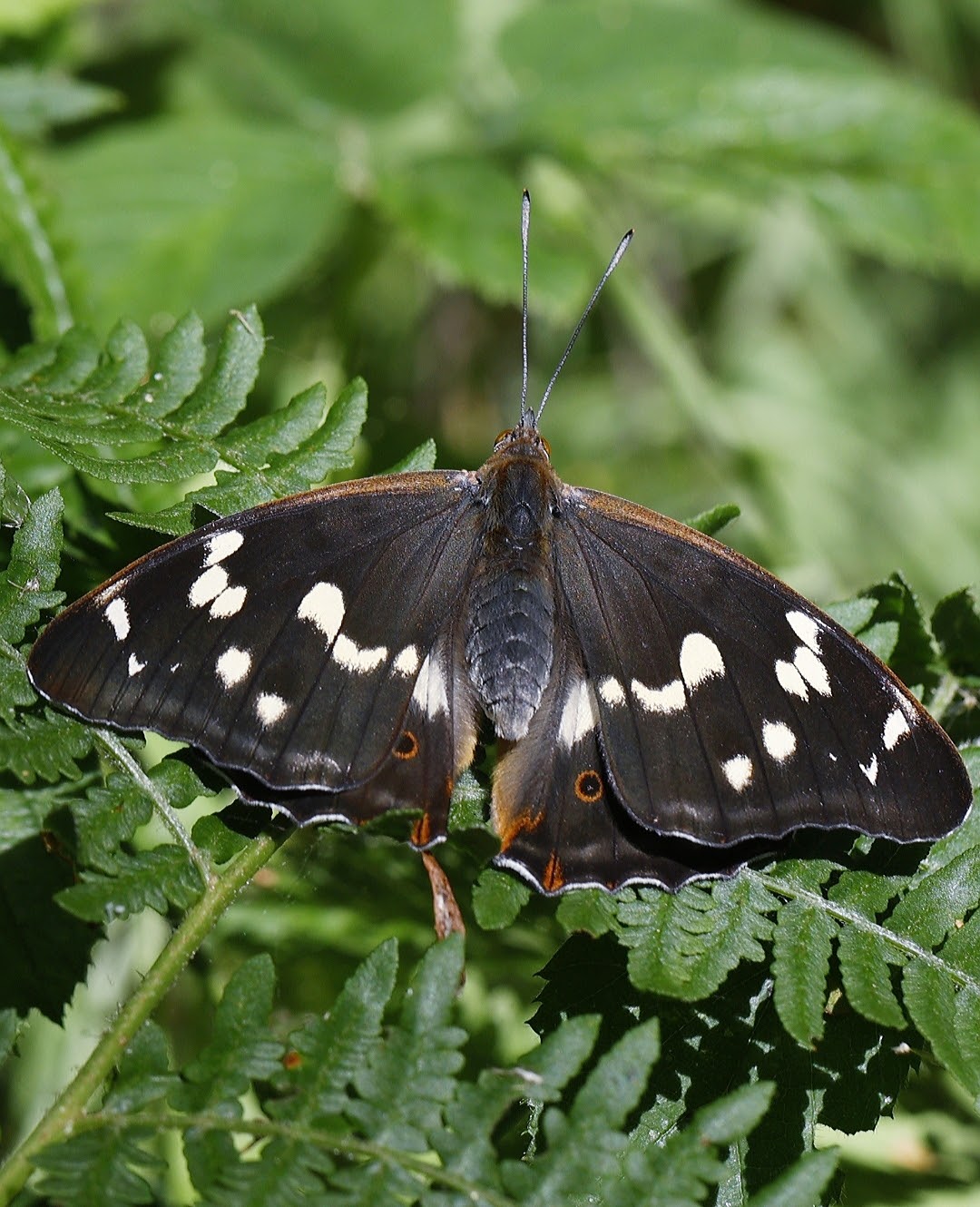
Purple Emperor - The Tale of a Discovery
By Nicholas Brownley
Sunday, July 5th 2020 turned out to be no ordinary walk through Sherwood Forest in Nottinghamshire. It would mark the beginning of an adventure in discovery, of learning and of new friendships; all brought about by the accidental finding of one of Britain’s most fabled butterflies, the Purple Emperor.
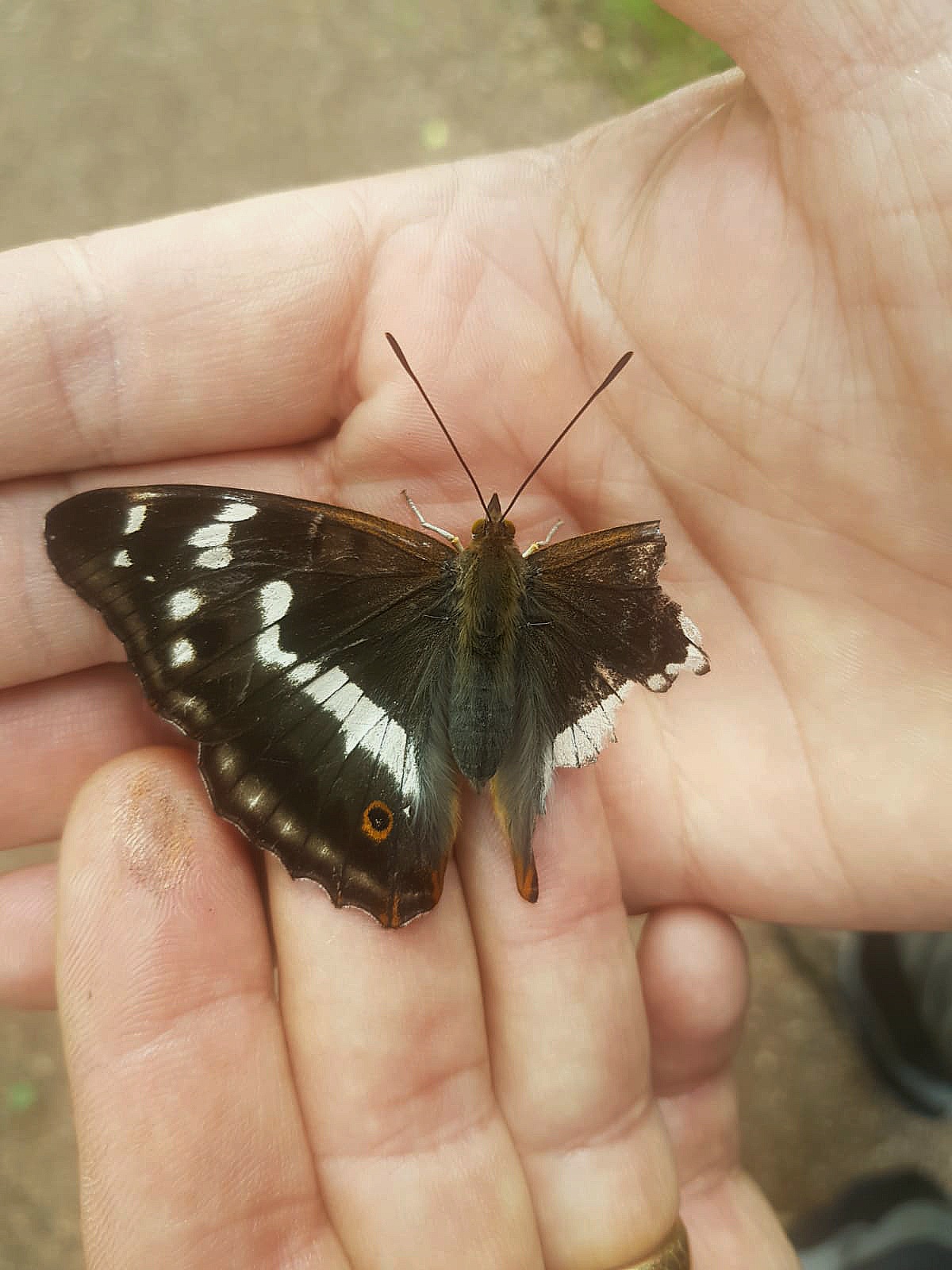
My wife Sam and I found a damaged, single-winged female on a cycle track, perhaps caught by a cyclist as the butterfly imbibed salts from the floor, as is so characteristic of Purple Emperor. She was still alive and I offered her the sanctuary of nearby vegetation. We weren’t immediately sure she was an Emperor but we instinctively knew she was something extra-ordinary. But how special? We were to find out shortly. We contacted Michael Walker at Nottinghamshire Wildlife Trust with a photo and through subsequent emails we were put in touch with Suzanne Halfacre the County Recorder at the time, which led us to Dennis Dell, East Midlands Purple Emperor champion, and specialist. It was confirmed that this was indeed Purple Emperor (PE) and now the search began to prove that this wasn’t a one off. Not some transient vagrant but rather, that Purple Emperor was here in the forest, breeding, existing alongside the legend of Robin Hood!
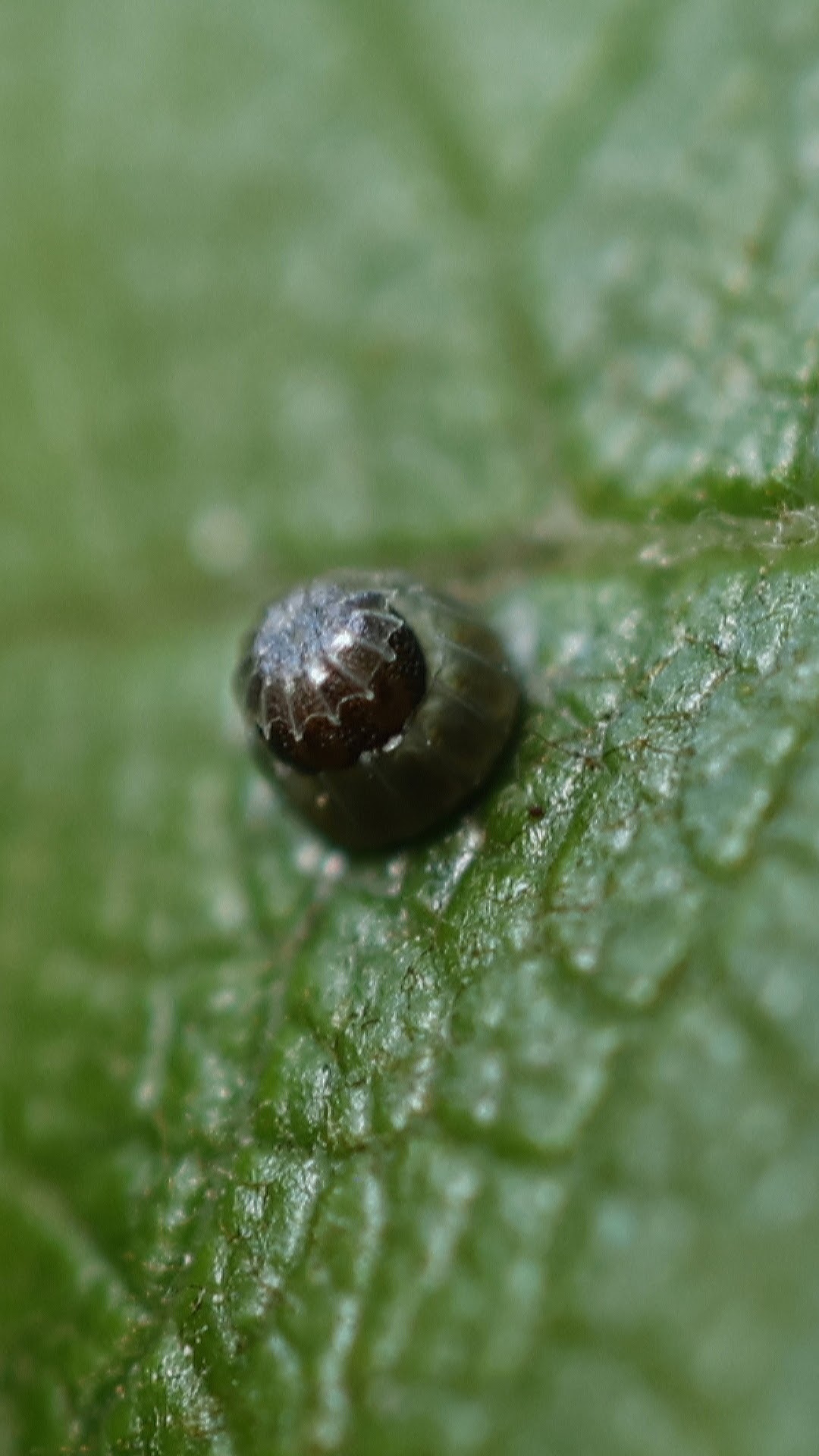
Imagine this; we had little knowledge of the butterfly, we knew nothing of its habitat, its favoured food plant or what the caterpillar looked like - nothing. We were complete amateurs, bur fired up with the task and a strong desire to locate any proof of Purple Emperor breeding in the expanse of Sherwood Forest.
So our journey began - one step at a time. Step 1: recognise the food plant, Goat Willow, Salix caprea, or Grey Willow S. cinerea. Step 2: find the tree in the forest and Step 3: search every suitable tree and every leaf for a green caterpillar no bigger than 10mm - all the while assuming that it will be here - somewhere.

Our endeavour continued, and supported by Dennis Dell’s encouragement, we found and searched countless willows almost to the point of futility. Then one day, very close to the spot where we had found our injured specimen, Sam ushered me over. I will never forget this moment... Sam was saying that she thought she had found one. With trepidation I walked across, and saw in typical pose, horns and all, an L2 instar Purple Emperor caterpillar! It was facing up the leaf, dead centre, on the very tip with the fress [eating damage] pattern on the leaf to boot. We were choked. Lottery win! Trembling hands - the lot. We immediately rang Dennis and sent him a photo; he was ecstatic. We had now proven that Sherwood Forest had a resident as majestic as the Purple Emperor; the most northerly proven site for PE in the country. A photo shoot was organised, with Jane Broomhead [EMBC], Suzanne Halfacre (County Recorder) and Dennis Dell with Richard Smythe and Ian Shale, two PE enthusiasts to witness “the launch” of this epic journey. To add to all this another two L2 larvae were found by us whilst we were all present.

I hope this has conveyed the reasons why we still search tirelessly, along now with the valued help and friendship of renowned entomologist Trevor Pendleton: After a chance meeting and subsequent conversations, we decided to combine all our efforts to boost our understanding of PE.
We have over these 3 years found all stages of the butterfly's life cycle; recorded and photographed the first emergence of Purple Emperor from pupa in Sherwood ever; found rare occurrences such as multiple eggs being laid on a single leaf, and taken photos of two L1 instars co-habiting on said leaf. Dennis said that in 30 years of study of PE he had only once before heard of it.
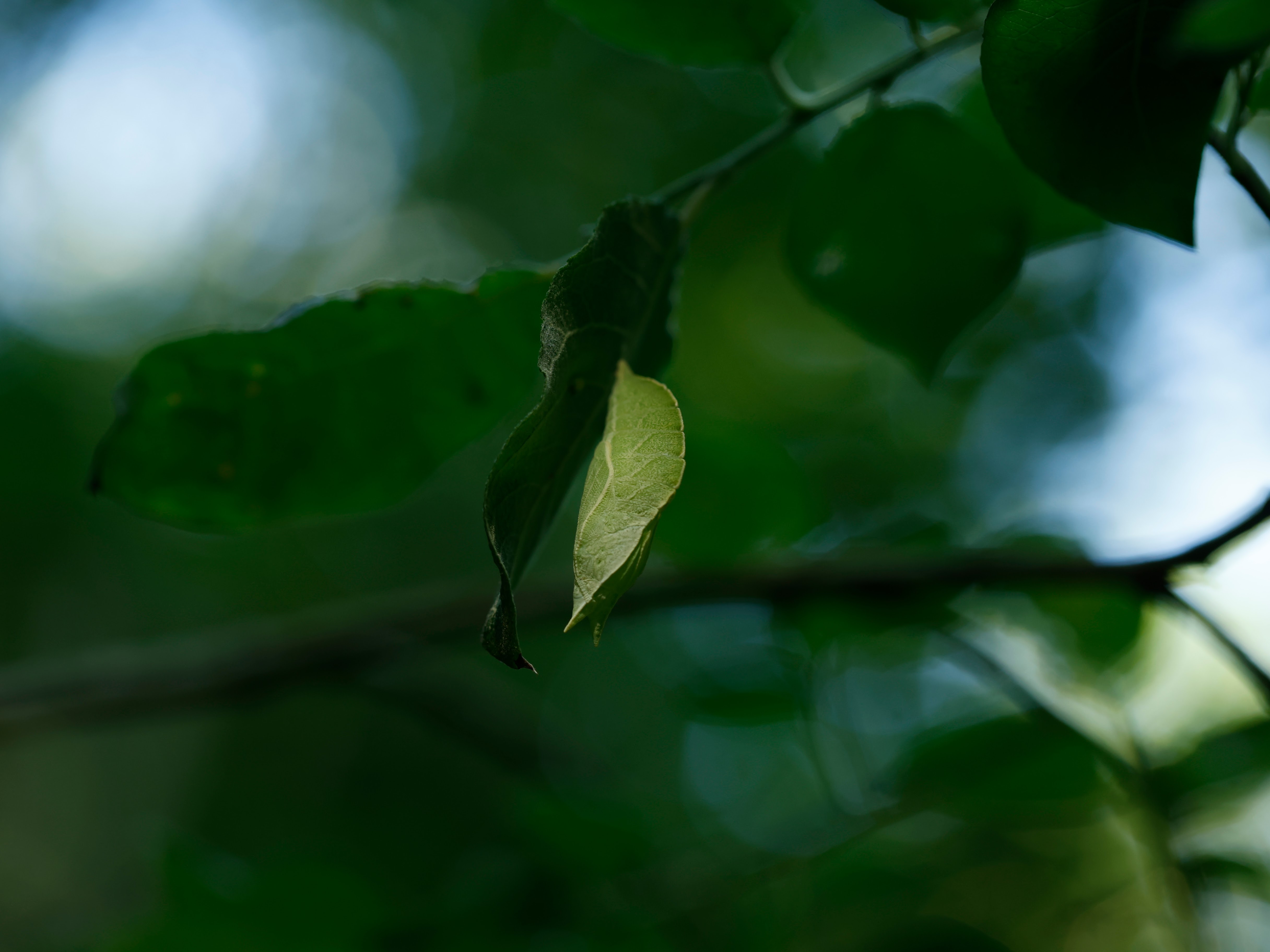
We employed techniques that were new and innovative at the time to help improve the count and records here at Sherwood. One of those, now commonly used in the UK, is the use of ultra-violet light to find the pupae. We at first shunned this, feeling it was an intrusion; a cheat to combat nature’s best attempts to conceal the creature. We did have success finding pupae without UV: The pupa hangs on the underside of the leaf, contrary to the life cycle of the caterpillar which spends its entire existence in comparative openness on top of the leaf, but with a fiendishly effective camouflage. However UV does shorten the search time which results in more ground covered. UV has to be employed at night, where the fluorescence of the pupa can be clearly seen. It’s not obvious why the pupa fluoresces but it continues even when the butterfly has emerged. My opinion is that it's part of the chemical make up, proteins etc. that are used to create the protective shell of the case, and is just incidental, rather than purposeful, but opinions differ.
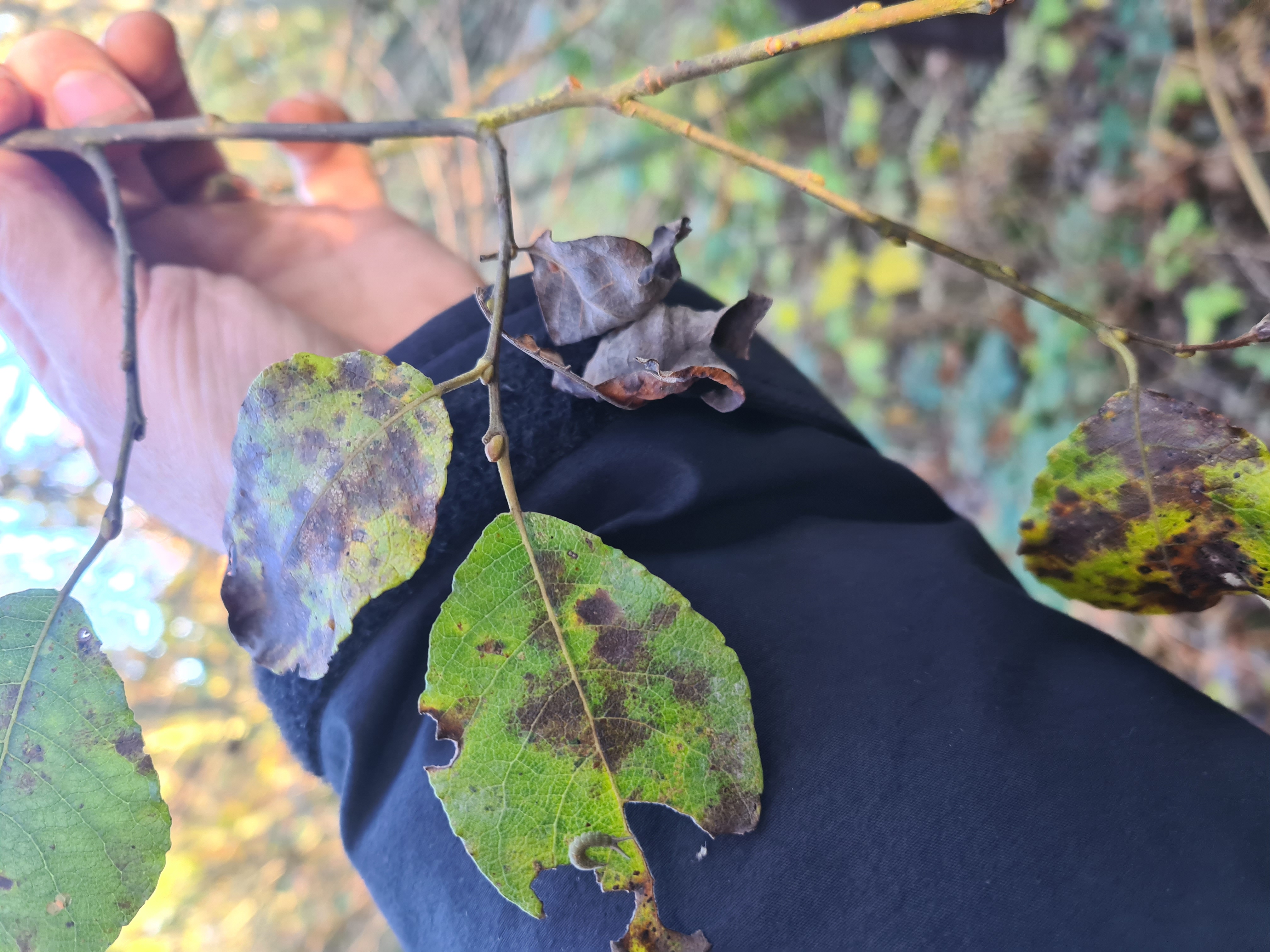
Other than a keen eye and perseverance to find larvae, there is a proven method we use called "Dangle Leaf". It isn’t our discovery, but gleaned from others on forums we are in. It works in the autumn and winter months when the larva enters diapause (hibernation) and vacates the leaf it has spent some weeks on, feeding or roosting. As the larva goes about its business it leaves trails of silk behind it, so it can safely traverse the leaves and branches it uses. When the leaves begin to die and fall, these leaves, woven in silk, cannot fall and so dangle, thereby betraying the position of the larva which is invariably close by on another leaf or perhaps hibernation roost such as a bud, a fissure, or as we recently found, wrapped in the junction of two small branches.
We must however combine these skills for one aim; to record and monitor the status of PE in Sherwood. Last year, between us, we recorded 40 eggs, which Trevor compiled with the use of grid references into a distribution map of the laying sites, which helped us gauge the expansion of the butterfly. Though this is largely governed by the distribution of suitable willows, we noticed a spread westward and northward within the confines of known willow growth. These eggs though were largely unsuccessful due to the very hot summer in 2022 that left a lot of the larvae dead in the shell. We did go on however to locate as L5 instars, around 15 larvae spread across the forest but inexplicably these disappeared: It is known that L5 larvae can become fidgety close to pupation, and can wander, but even with UV as an advanced tool we couldn’t trace any pupae except for one which successfully emerged as a female imago.
I hope this tale of discovery that we share will encourage some readers to check local woods for willows and to endeavour to find this beautiful species, or even to search in known sites for these overlooked stages of the butterfly's life cycle; for that little caterpillar has to endure “the slings and arrows of outrageous fortune” to become those fleeting glimpses of the adult we so much revere.
